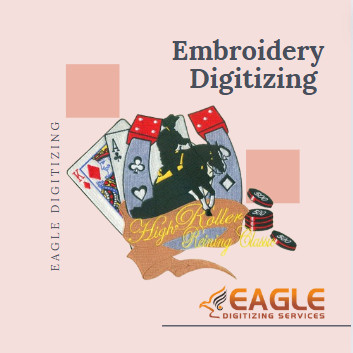Unlocking the Magic of Silk Screening: A Step-by-Step Guide
Silk screening, also known as screen printing is an art form that marries creativity with craftsmanship, resulting in stunning, vibrant designs on fabric, paper, and other surfaces. But why is it so popular, and why do artists and designers love it? The beauty of silk screening lies in its versatility and its ability to produce high-quality, durable prints. Whether you're designing custom t-shirts, posters, or even fine art, silk screening offers a unique, hands-on approach that brings designs to life in a truly magical way.
The
Fascinating History of Silk Screening
From Ancient China to Modern Art
Silk
screening’s roots trace back to ancient China, where the technique was first
used to transfer intricate designs onto fabric. It wasn’t until the early 20th
century, however, that silk screening as we know it today began to evolve,
particularly through the work of artists like Andy Warhol. Warhol’s famous pop
art prints, including the iconic Campbell’s Soup cans, revolutionized the
medium, showcasing the potential of mass production alongside artistic expression.
What You’ll Need for Silk Screening: The Essentials
The Right Materials: Screens,
Ink, and More
At its core, silk screening requires just a few essential materials: a
mesh screen, ink, and a surface to print on. The screen, traditionally made from
silk (hence the name), has evolved into a synthetic mesh material that allows
ink to pass through in a controlled manner. The ink itself must be carefully
chosen to suit the material being printed on—whether it’s water-based for
fabrics or oil-based for other surfaces.
Tools of the Trade: Squeegees,
Emulsion, and Frames
A
squeegee is an indispensable tool in the silk screening process. This
rubber-edged device is used to push ink through the screen and onto the printing
surface. Emulsion, a light-sensitive substance, is also a key component; it’s
applied to the screen to create a stencil of your design. The frame holds
everything in place and ensures the screen stays taut during printing.
Choosing the Best Fabric for
Your Silk Screen Prints
While
silk was originally the fabric of choice, modern silkscreening can be done on almost any material. Popular options include
cotton, polyester, paper, wood, and even metal. Each surface requires different
types of ink and printing techniques to achieve the best result.
The
Magic Behind the Process: How Does Silk Screening Work?
Step
1: Preparing Your Design for Silk Screening
Choosing the Right Design for Printing
Not
all designs are suitable for silk screening. Simple, bold graphics with clean
lines work best, as intricate details can be lost or become difficult to print.
Keep your design in mind as you move through the process to ensure it’s
something that will translate well to the screen. Consider how the design’s
elements will work together on a screen to avoid overwhelming the process with
overly complex details.
How to Create a Stencil for Silk
Screening
Creating
a stencil is one of the most important steps. This can be done by drawing your
design onto a transparency and transferring it onto the screen using light
exposure. The areas that need to remain unprinted are coated with a
light-blocking material, while the areas to be printed are left open. Ensure
the stencil is securely fixed to avoid shifting during the exposure process,
which can result in a blurry or misaligned design.
Digital Designs vs. Hand-drawn
Artwork: What Works Best?
While
hand-drawn designs have a certain charm, digital designs offer precision and
flexibility. Many modern silk screen artists use design software to create their
stencils, allowing them to fine-tune their artwork for the perfect print.
Digital tools also enable easier adjustments, such as resizing and changing
colors, which can be a challenge with hand-drawn artwork.
Step 2: Setting Up Your Screen
Cleaning and Prepping Your Screen for a Smooth Print
Before starting the silkscreening process, it’s crucial to clean the
screen thoroughly. Any debris or oils can interfere with the application of
emulsion, leading to imperfect prints. Use a specialized cleaner to ensure the
screen is spotless. It’s also important to inspect the mesh for any damage or
wear that could affect the final print quality.
Applying
Emulsion: The Art of Coating the Screen
Once
the screen is clean, apply a thin, even layer of emulsion. This is the
foundation for your stencil. Be sure to coat both sides of the screen evenly to
avoid any inconsistencies in the final print. Allow the emulsion to dry fully
before exposure, as any remaining wet spots can affect how the design holds up
under the light.
Drying Time: Patience is Key
After applying emulsion, it’s vital to let the screen dry completely before exposing it to light. Depending on the humidity and temperature, this can take anywhere from 30 minutes to an hour. Ensure that the drying area is free from dust or contaminants that might stick to the screen while it dries.
Step
3: Burning the Screen: The Magic Moment
What Does 'Burning' a Screen Mean?
‘Burning’
the screen refers to the process of exposing the emulsion-coated screen to
light, which hardens the emulsion in the areas that aren’t blocked by the
design. This creates a stencil on the screen, leaving the areas you want to
print open. Be sure to expose the screen for the recommended time to avoid over
or under-exposure, which can affect the sharpness of your design.
How to Expose Your Screen to
Light for the Perfect Stencil
Expose
the screen to light for a set amount of time (depending on the type of emulsion
you’re using). A UV light source works best, as it provides a consistent exposure
that ensures the stencil is sharp and precise. Experimenting with different
light sources can help you understand how they affect the outcome.
Troubleshooting: What Happens
When It Doesn’t Work?
If
the exposure process doesn’t go as planned, the design may not transfer
correctly to the screen. In this case, recheck the light exposure time, the
screen’s cleanliness, and the evenness of the emulsion coating. If necessary,
redo the exposure process, paying closer attention to each step for a better
result.
Step 4: Setting Up Your Workspace for Printing
Creating a Smooth, Flat Surface for Silk Screening
A
flat, stable surface is essential for successful printing. Set up your
workspace in a well-lit, clutter-free area to ensure that the screen and the
material stay in place while you work. Ensure the surface is also large enough
to accommodate both the screen and the materials you will be printing on.
Why Lighting and Temperature
Matter During Printing
The
right lighting and temperature are important for achieving consistent prints.
Too much heat can cause the ink to dry too quickly, while inadequate lighting
can make it difficult to see the details of your design. Maintaining a
consistent room temperature is key to avoiding fluctuations that could impact
your print quality.
How to Prevent Messes and Make
Clean Prints Every Time
To prevent smudges or mistakes, ensure that you have everything in
place before starting. Work carefully with a steady hand and avoid rushing
through the process. Keeping a tidy workspace and using tools like masking tape
to protect edges can help keep your prints clean.
Step
5: Choosing the Right Ink for Your Project
Water-Based vs. Plastisol Inks: What’s the Difference?
Water-based
inks are eco-friendly, offering a soft feel and a more breathable print, while
plastisol inks are thicker and more durable, often used for vibrant,
long-lasting designs. Understanding these differences will help you choose the
right ink for the type of product you’re printing on.
How to Select the Best Ink for
Different Surfaces
Choose
your ink based on the surface you're printing on. Fabric, paper, and wood all
require different inks to ensure that the design adheres properly and lasts
over time. Researching your material’s properties will help guide your ink
choice and ensure the best results.
Mixing and Thinning Ink:
Achieving the Perfect Consistency
Achieving
the perfect ink consistency is vital. If your ink is too thick, it can cause
smudging; too thin, it might not cover the screen properly. Use additives to
adjust the consistency as needed, and test the ink on scrap material to ensure
it works as intended.
Step
6: The Silk Screening Process: Printing Your Design
Positioning Your Screen: How to
Align It Perfectly on Your Surface
Carefully
align the screen on your material to ensure the design is centered and
straight. Double-check the placement before proceeding. Small misalignments can
cause the print to appear off-center, so take the time to adjust accordingly.
How to Apply Ink: Mastering the
Squeegee Technique
Use
a squeegee to pull ink across the screen in one smooth motion. Applying
consistent pressure ensures even coverage. Practice the motion to develop a
rhythm that works for your design and prevents unwanted smudging.
Getting Even Coverage: Tips for
a Clean Print
To
avoid uneven prints, make sure the ink flows smoothly through the mesh. Use a
light touch and gradually build up the ink layer for the best result. If
needed, apply multiple passes with the squeegee to ensure a consistent, clean
finish.
Step
7: The Big Reveal: Checking Your Print
Lifting the Screen: Revealing the Final Design
Slowly lift the screen to reveal your design. This is one of the most
exciting moments in the process—the instant when your hard work comes to life.
Take a moment to admire the result, as this is where all your preparation and
technique come together.
Inspecting for Imperfections:
What to Look For
Check
for inconsistencies in the print, such as areas where the ink didn’t adhere
properly or where there’s too much ink buildup. Fix any imperfections quickly
to avoid wasting materials. You can often salvage prints by adjusting ink
thickness or screen alignment.
Fixing Mistakes: Can You Salvage
a Failed Print?
Not
every print will turn out perfectly. However, mistakes can often be fixed by
adjusting the pressure, ink, or screen placement. It’s all part of the learning
process. If necessary, reprint the design with adjustments to improve the
outcome.
Step
8: Curing Your Prints: Making Them Last
Why Curing Is Essential for
Durability
Curing
is essential to ensure that your design stays intact over time. The ink needs
to be fully set, ensuring that it won't crack, peel, or fade. Proper curing
also ensures that the ink is fully bonded with the material for long-lasting
prints.
How to Properly Cure Your Prints
Using Heat
Once
the print is dry, use a heat source like a flash dryer or heat press to cure
the ink. The ink needs to be exposed to heat for a specified amount of time to
fully bond with the surface. Monitor the temperature carefully to ensure you
achieve the right level of heat.
Common Mistakes to Avoid When
Curing
Overheating or underheating the ink can cause issues like fading or cracking. Pay attention to the manufacturer’s instructions to achieve the best results. If unsure, err on the side of slightly underheating, as over-curing can lead to irreversible damage.
Step 9: Cleaning Your SilkScreen and Tools
The Right Way to Clean Your Screen After Each Print
Clean
your screen immediately after use to prevent ink buildup and to keep it in good
condition for future prints. Use a specialized cleaner to remove excess ink
without damaging the mesh. Store the screen in a dry, safe place to ensure it’s
ready for the next use.
Caring for Your Squeegee and
Frames
Proper
care of your sleeves and frames will ensure they last through many printing
sessions. Wash them thoroughly after each use and store them in a safe place.
Regular maintenance of these tools will keep them functioning optimally.
Tips for Extending the Life of
Your Equipment
Avoid storing equipment in damp or overly hot environments, and always clean your tools after use to extend their lifespan. Regularly check for wear and tear, and replace parts as necessary to keep your setup in top condition.


